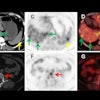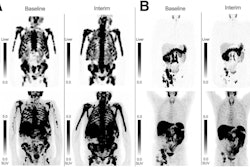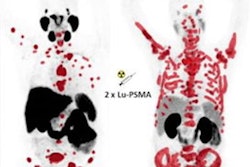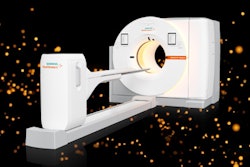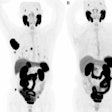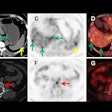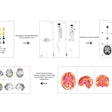Radiologists have not yet taken up validated scoring systems and interpretation frameworks for PET/CT prostate cancer reporting, according to a study published October 14 in Radiology.
In a review of 111 reports from 42 U.S. institutions, researchers found substantial real-world differences in terms of their length, content, structure, and readability, with this variability potentially jeopardizing patient care, noted lead author Hebert Vargas, MD, of New York University Langone Health in New York City, and colleagues.
“Findings suggest substantial real-world heterogeneity and underutilization of standardized interpretation frameworks for PSMA PET reporting in the United States, which can potentially lead to misinterpretation and diagnostic errors, inconsistent follow-up or work-up, and management delays,” the group wrote.
Since its approval in 2020, prostate-specific membrane antigen (PSMA) PET/CT has been widely adopted. While expert groups across the world have developed various scoring systems and interpretation frameworks for the technique -- for example, PSMA Reporting and Data System (PSMA-RADS) and Response Evaluation Criteria in PSMA PET/CT (RECIP) -- the extent to which they are used is unknown, the researchers noted.
To bridge the knowledge gap, the group analyzed 58 PSMA-PET/CT reports from academic institutions, 50 from community or private practice, and three from Veterans Affairs hospitals. Only 12 out of the total 111 (11%) used a standardized reporting framework, with no differences between academic and nonacademic practices (p = 0.28), the group reported.
Report length also varied, ranging from 74 to 843 words, as did report readability (Flesch-Kincaid Grade Level: mean, 15.03, which indicates college-level comprehension). Among 72 reports that referenced prior exams, only 28 (39%) reported longitudinal assessment for all lesions mentioned.
Reporting of prostate lesions was also heterogeneous, the group found. Among 90 reports with prostate lesions, 83 (92%) reported standardized uptake value, four (4.4%) lesion size, three (3.3%) the likelihood of extracapsular extension, and 13 (14%) the likelihood of seminal vesicle invasion. Nodal or distant metastases were noted in 41 of 111 reports (37%), and of those, 35 (85%) reported standardized uptake value.
Finally, incidental findings -- a feature of most imaging exams -- were mentioned in 99 of 111 reports, with recommendations regarding their management provided only in 17, the researchers noted.
 A diagram showing the frequency of incidental findings in 111 prostate-specific membrane antigen (PSMA) PET/CT reports. GI = gastrointestinal.RSNA
A diagram showing the frequency of incidental findings in 111 prostate-specific membrane antigen (PSMA) PET/CT reports. GI = gastrointestinal.RSNA
Integration of existing systems into a single set of recommendations for PSMA-PET interpretations is needed, they wrote -- a task anticipated through the currently in progress Standardized PSMA PET Analysis and Reporting Consensus (SPARC) initiative.
“Future work might include querying imaging providers about their perspectives on various interpretive frameworks and further exploration of barriers to their implementation,” the researchers concluded.
The full study is available here.


